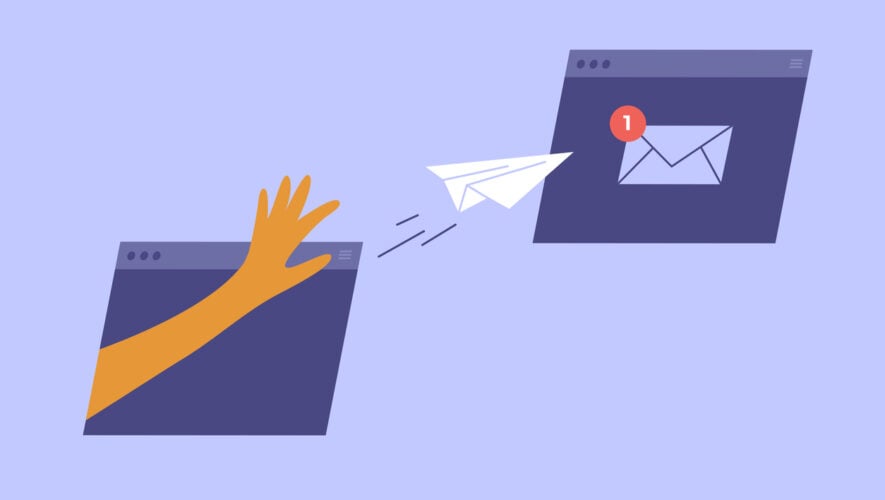The Journal of Accountancy published an article about how CPAs should end their emails for maximum professionalism a few days ago and it got me thinking about an old article my former colleague Caleb Newquist wrote about email pet peeves many years back. Actually it got me thinking about a rant on how “best” is the worst way to sign off emails and how much it pisses us off but for some reason I couldn’t find an article about it. Maybe Caleb and I just bitched about it in a series of increasingly angry text messages. I dunno, I just know we hate it.
Alright, let’s see what JofA says about email sign-offs:
Paul Sundin, CPA, a tax strategist and CEO of Emparion, a company that provides strategic retirement services, said that when he deals with government officials, he uses simple, formal closings such as “Sincerely” or “Respectfully.”
“They give the impression that I am here to do my job seriously,” he said.
*makes a mental note never to use “sincerely” or “respectfully” when responding to reader emails*
For clients, on the other hand, he often goes with “Best regards” for initial emails. Later that might change to “Thank you,” “Many thanks,” or “All my thanks.”
Those closings, along with other details in his email signature — his name, credentials, website address, and LinkedIn profile — communicate credibility, he said.
It turns out some people are not a fan of thanks. And especially its enthusiastic brother “Thanks!” which I use often because I know it irritates people. My personal favorite is “thanks in advance!” because it implies that I have little faith the person I’m emailing will do the thing I’ve politely asked them to do; the exclamation point being the thing that conveys passive-aggressiveness.
Some professionals prefer to use a standard sign-off regardless of who they’re talking to:
Dalton R. Sweaney, CPA, a partner at Gray, Salt & Associates LLP in Claremont, Calif., keeps it simple and consistent: “Best regards.”
“It’s the only one I use, regardless of setting,” he said.
I’m just gonna put this out there: most people I’ve encountered who use “best regards” are dicks. I’m not saying Dalton is, I’m just saying my learned experience has been that the “best regards” people tend to offer indifferent regards at best outside of emails. Actually now that I’m thinking about it, what does “best regards” even mean? Like “hope you’re well” right? Let’s look it up.
What does “best regards” mean?
“Best regards” is a common, friendly closing for emails and written letters. When you see “best regards” near the end of a message, it simply means the writer wishes you well. It is a semiformal letter ending, versatile enough for both personal and professional correspondence. “Best regards” typically suggests that you respect the recipient, but don’t necessarily have a close personal relationship with them. Other similar closings include “best wishes,” “all the best” and “warmly.” More formal closings are “sincerely” or “respectfully.”
There are variants of “best regards” you can use depending on the situation and how you feel about the receiver like “kind regards,” “warmest regards,” or if you’re really busy you can go with “best” which we’ve already determined is the worst but how else can you tell people you’re too busy for this shit without actually saying that.
If you really want, you can just not overthink this and sign off like a normal human being engaging in conversation with another human being. Like this:
Gwen Mazzola, CPA, assurance partner at HoganTaylor LLP, usually signs off with “Thank you.” But depending on who she’s exchanging emails with and even what day it is, her closing could change.
“For business emails, it is normally ‘Thank you’ or ‘Have an awesome day’ or ‘Let’s get together soon,'” she explained. “The closing is typically what I would say to them in a conversation.”
Whatever your sign-off of choice, just remember DON’T REPLY ALL unless you absolutely have to. Everyone agrees there are very few appropriate situations in which to reply all. Just like we all agree “Have a wonderful bountiful lustful day” is probably the worst email sign-off in history.
Thanks!




“I’m just gonna put this out there: most people I’ve encountered who use “best regards” are dicks.”
I often end my emails with a variant of this (i.e. “Regards”), so the above point by Adrienne checks out.
I usually end in Thanks if I’m asking for something, or if I’m replying to someone who provided me with something. Otherwise, I use Regards.
I’m generally only emailing clients requesting missing information. So I usually sign off “Thank you for your time!” since I know it takes them time and effort to get the information together.